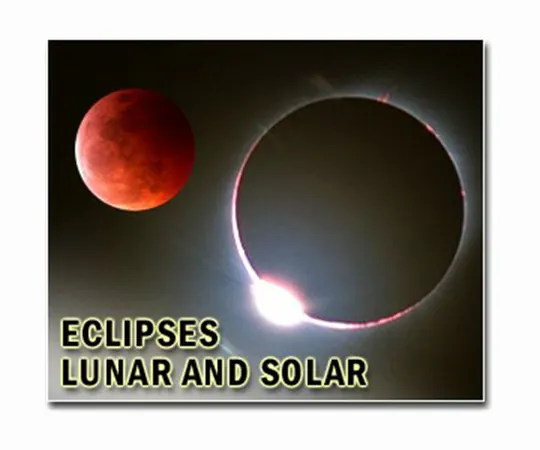
Groundbreaking Insights from NASA's Solar Eclipse Research: What We Learned!
2024-12-11
Author: Amelia
Groundbreaking Insights from NASA's Solar Eclipse Research: What We Learned!
On April 8, 2024, a breathtaking total solar eclipse illuminated the skies across North America, prominently crossing through Mexico, the United States, and northeastern Canada. NASA, in collaboration with numerous research initiatives and citizen scientists, aimed to delve deep into our Sun’s interactions with both Earth’s atmosphere and communication systems. Recent developments from these efforts were unveiled during a press briefing at the American Geophysical Union’s annual meeting in Washington, D.C.
Citizen Scientists at Work
At the forefront of this exploration was the Citizen CATE 2024 project, which assembled 35 dedicated observation teams from communities ranging from Texas to Maine. Their mission was to capture invaluable images of the Sun's corona—the outermost layer of its atmosphere—during the brief moments of totality. Kelly Korreck, NASA’s eclipse program manager, highlighted the significance of these community contributions, paving the way for greater understanding of solar phenomena.
Project manager Sarah Kovac reported an impressive collection of over 47,000 images, despite some teams battling cloud cover. This massive effort will culminate in an hour-long movie showcasing the dynamic changes of the corona, reinforcing both the scientific community's and volunteers' commitment to this pivotal research.
Soaring High Above the Eclipse
Elevating the research, two NASA WB-57 aircraft participated in observing the eclipse from an altitude of 50,000 feet. Equipped with advanced cameras and spectrometers, these planes aimed to extend the totality experience and gather essential data on the corona. Despite minor complications due to vibrations affecting cameras mounted on the aircraft's wings, the spectrometers successfully captured pristine data from the eclipse.
Shadia Habbal from the University of Hawaii, who led one of the research teams, expressed excitement over the rich findings that are propelling further studies and experiments during future eclipses.
Impact on the Atmosphere
In a remarkable engagement with amateur radio operators—known as “ham” radio enthusiasts—more than 6,350 participants gathered data to observe how the loss of sunlight influenced radio signals and the ionosphere. Their findings indicated varying changes in radio communication during the eclipse: while lower frequencies showed improved conditions, higher frequencies faced more challenges.
Additionally, the Nationwide Eclipse Ballooning Project involved over 800 students who launched balloons equipped with sensors into the Moon’s shadow. Their research confirmed the occurrence of atmospheric gravity waves—ripples that emerge similarly to waves in a disturbed lake. Scientists believe these waves are triggered by abrupt shifts in the atmosphere, along the lines of what can be observed at sunset.
What Comes Next?
As the dust settles from this incredible phenomenon, scientists are already setting their sights on the future. The insights gained from these experiments not only add to our understanding of solar and atmospheric interactions but also set the stage for upcoming research endeavors.
Eclipses are a compelling reminder of the cosmic connections influencing our planet, and the partnership between professional scientists and enthusiastic citizen participants highlights the importance of collaboration in unraveling the mysteries of our universe.
Stay tuned as we continue to monitor and report on the revelations stemming from this groundbreaking research! You won’t want to miss what’s next on this celestial journey!



 Brasil (PT)
Brasil (PT)
 Canada (EN)
Canada (EN)
 Chile (ES)
Chile (ES)
 Česko (CS)
Česko (CS)
 대한민국 (KO)
대한민국 (KO)
 España (ES)
España (ES)
 France (FR)
France (FR)
 Hong Kong (EN)
Hong Kong (EN)
 Italia (IT)
Italia (IT)
 日本 (JA)
日本 (JA)
 Magyarország (HU)
Magyarország (HU)
 Norge (NO)
Norge (NO)
 Polska (PL)
Polska (PL)
 Schweiz (DE)
Schweiz (DE)
 Singapore (EN)
Singapore (EN)
 Sverige (SV)
Sverige (SV)
 Suomi (FI)
Suomi (FI)
 Türkiye (TR)
Türkiye (TR)
 الإمارات العربية المتحدة (AR)
الإمارات العربية المتحدة (AR)